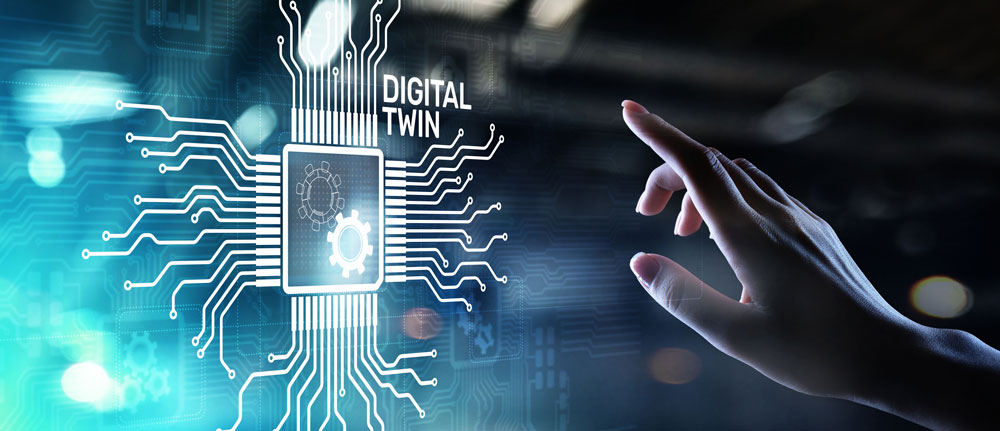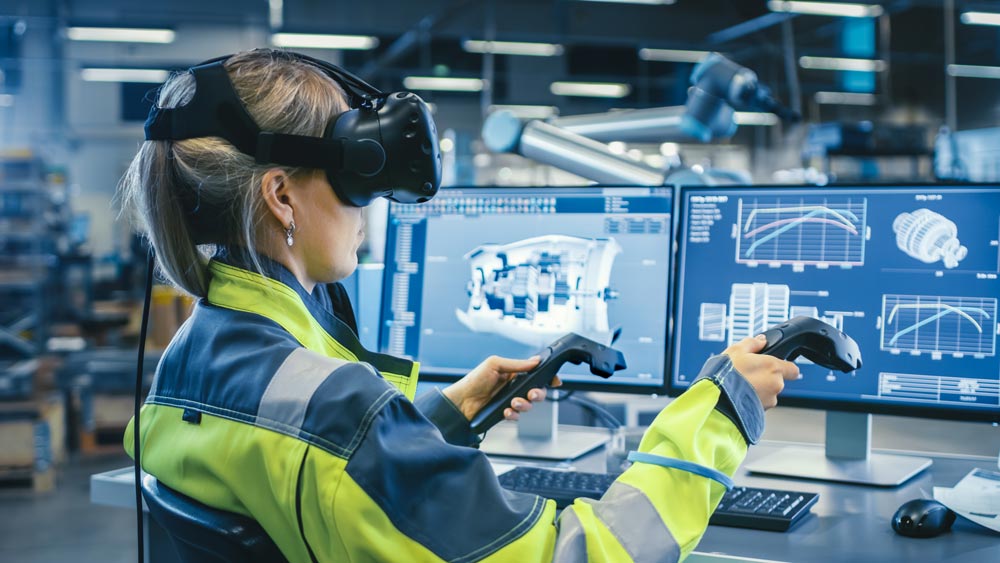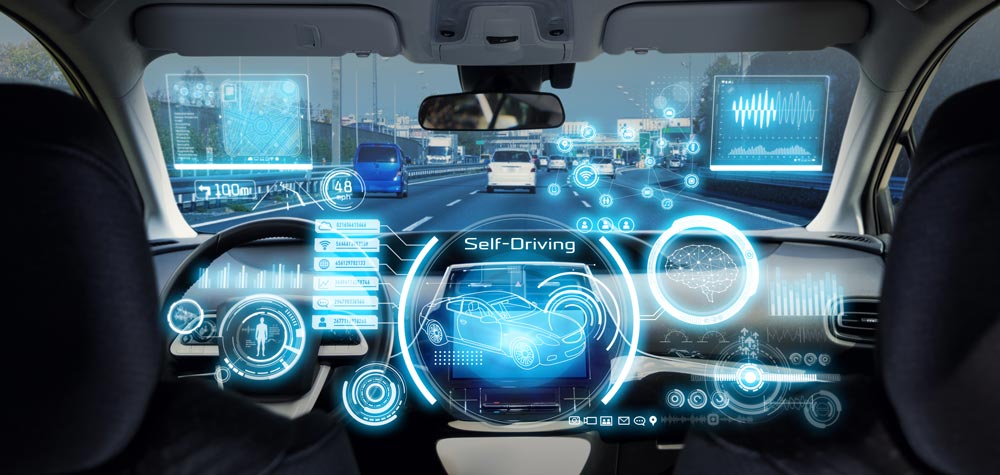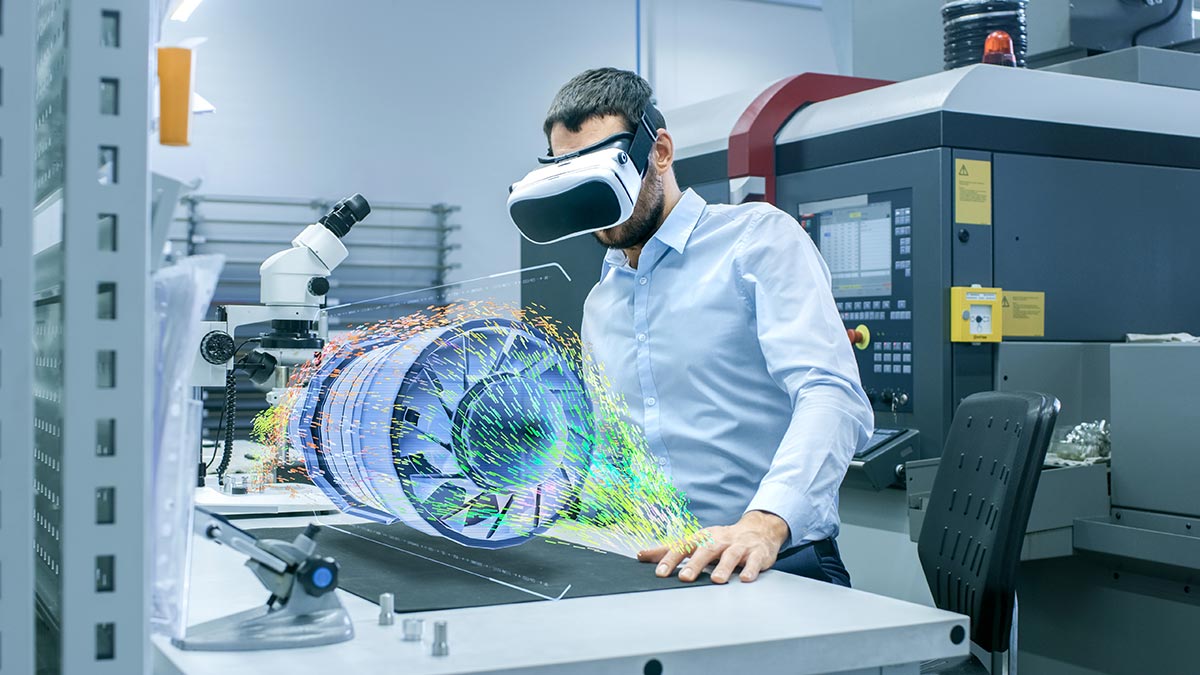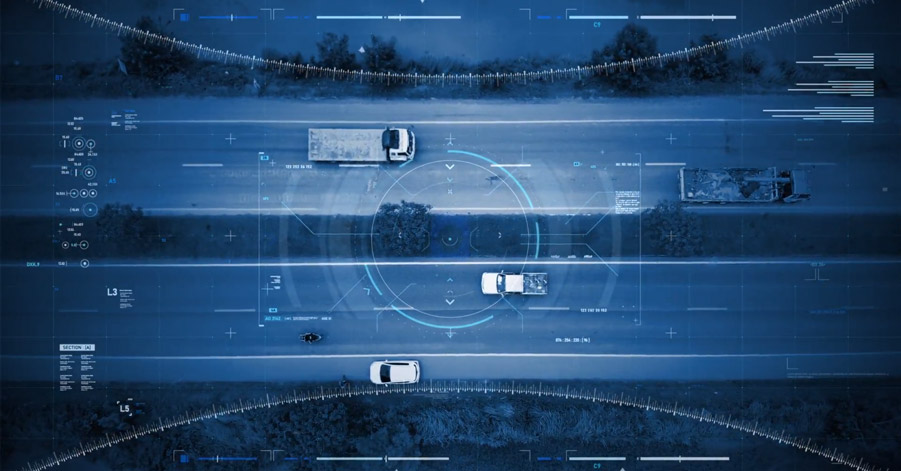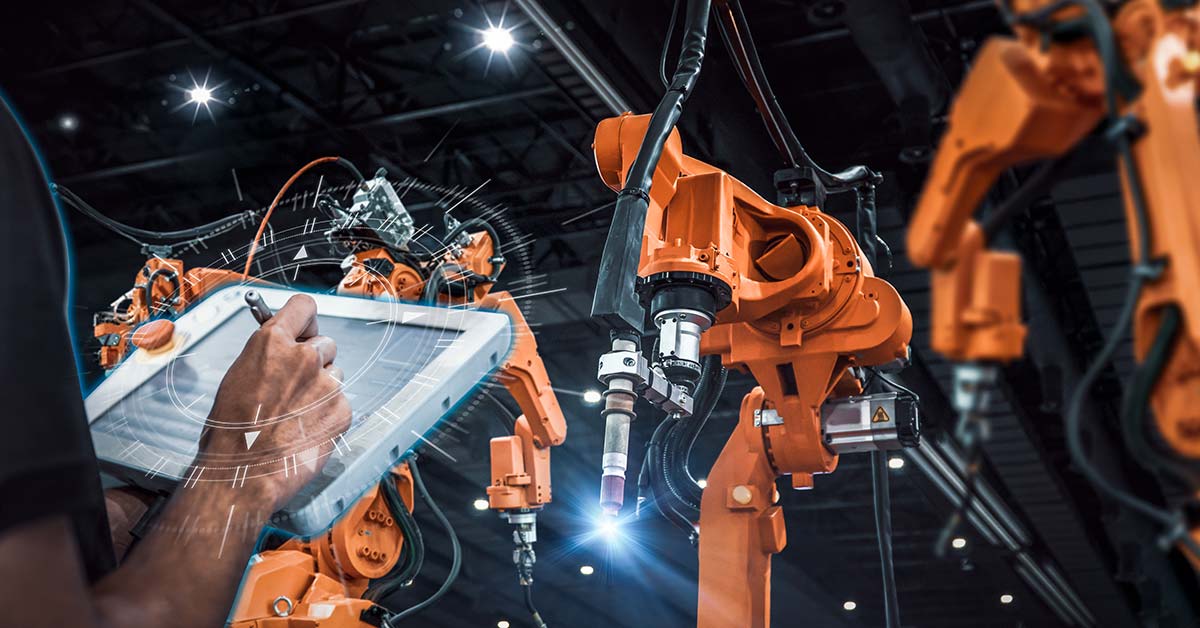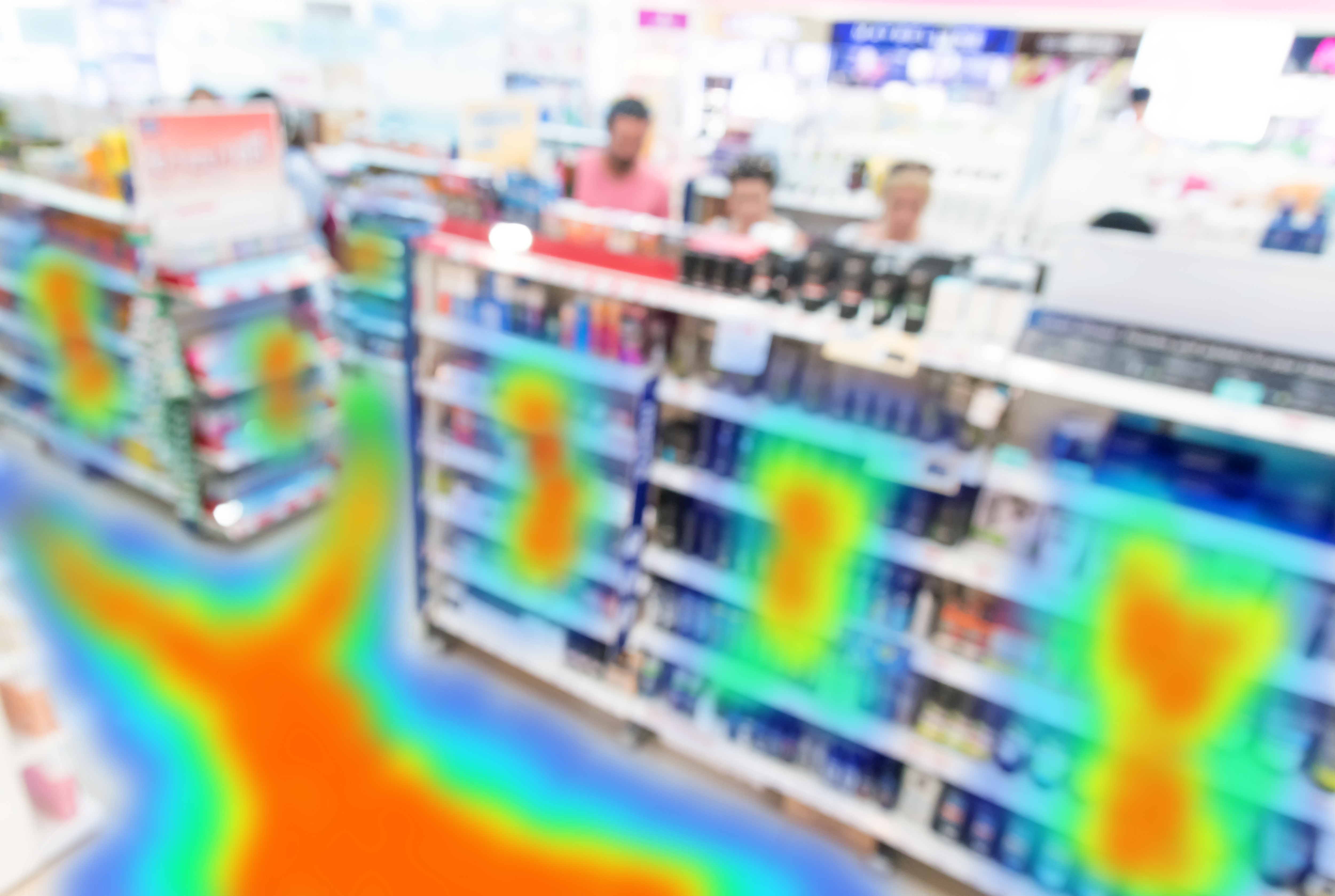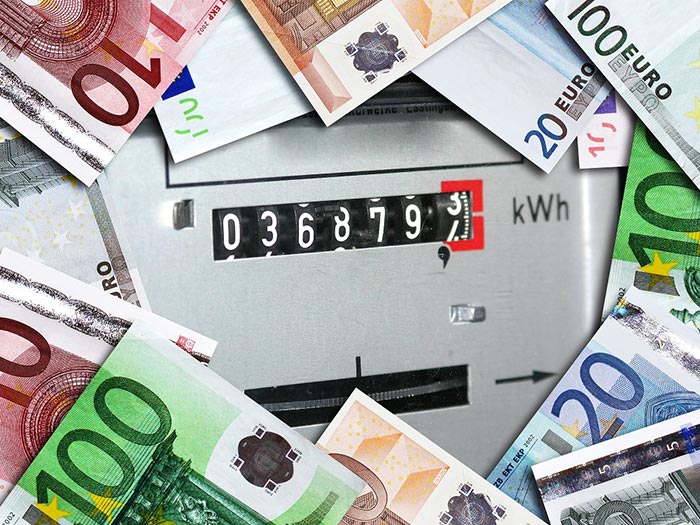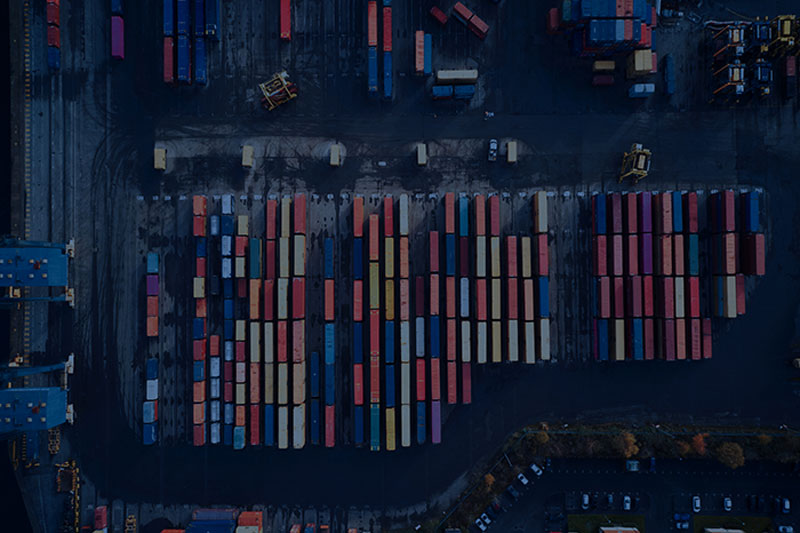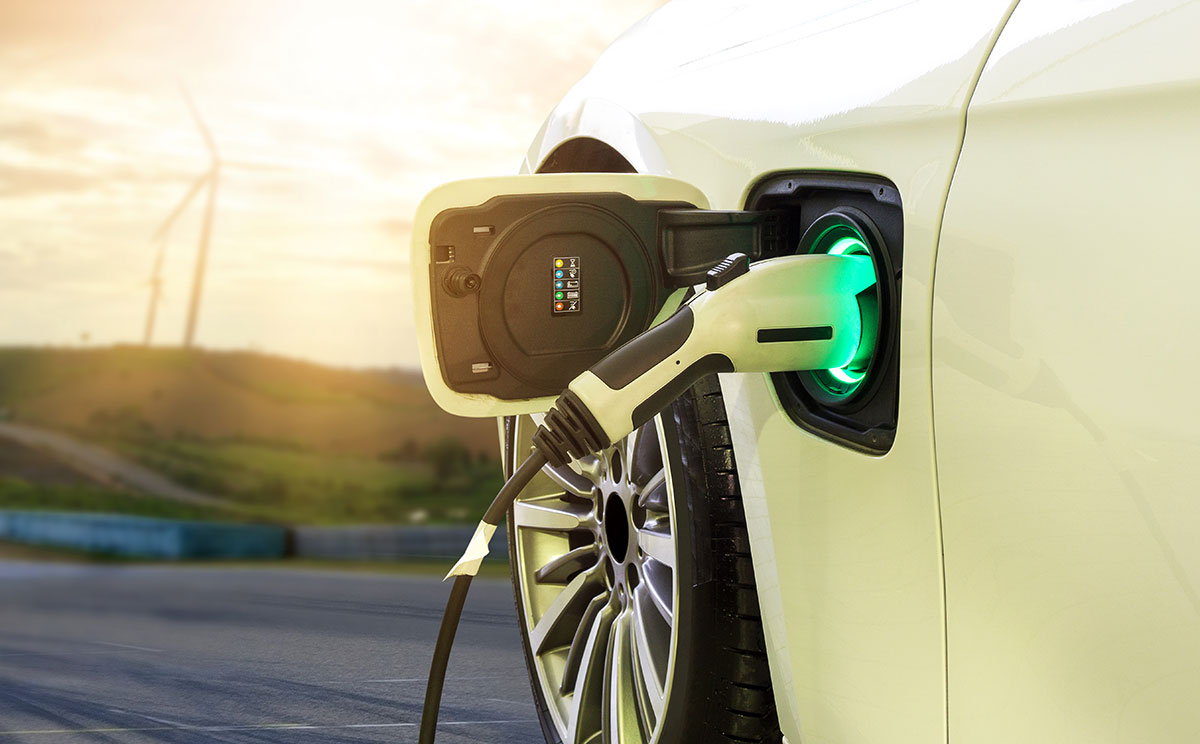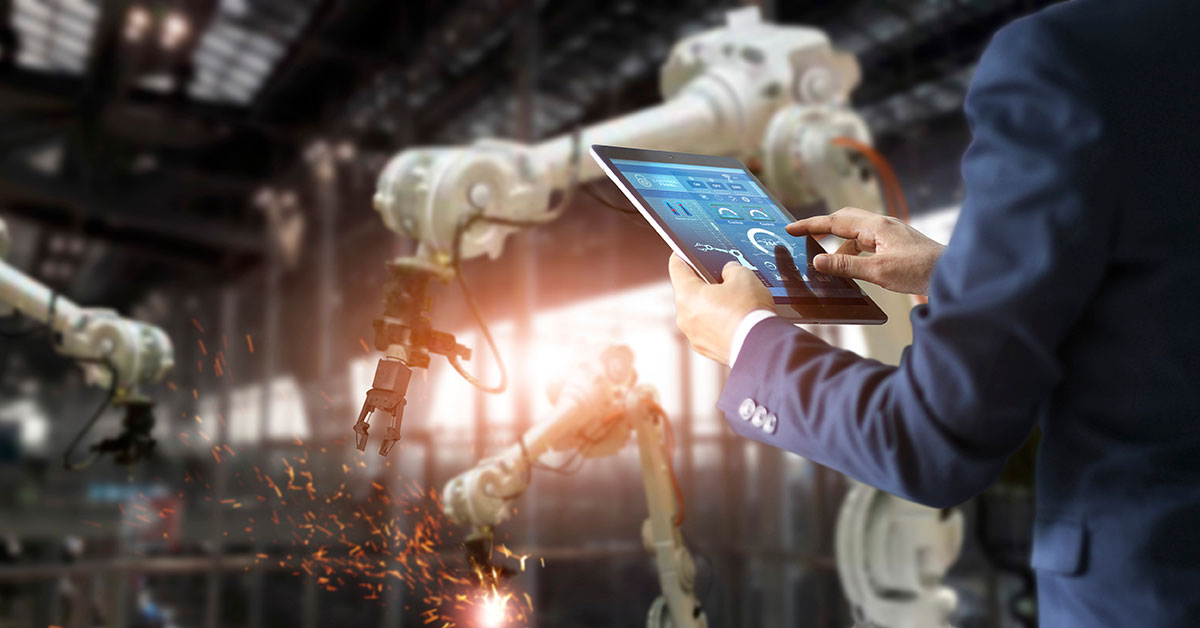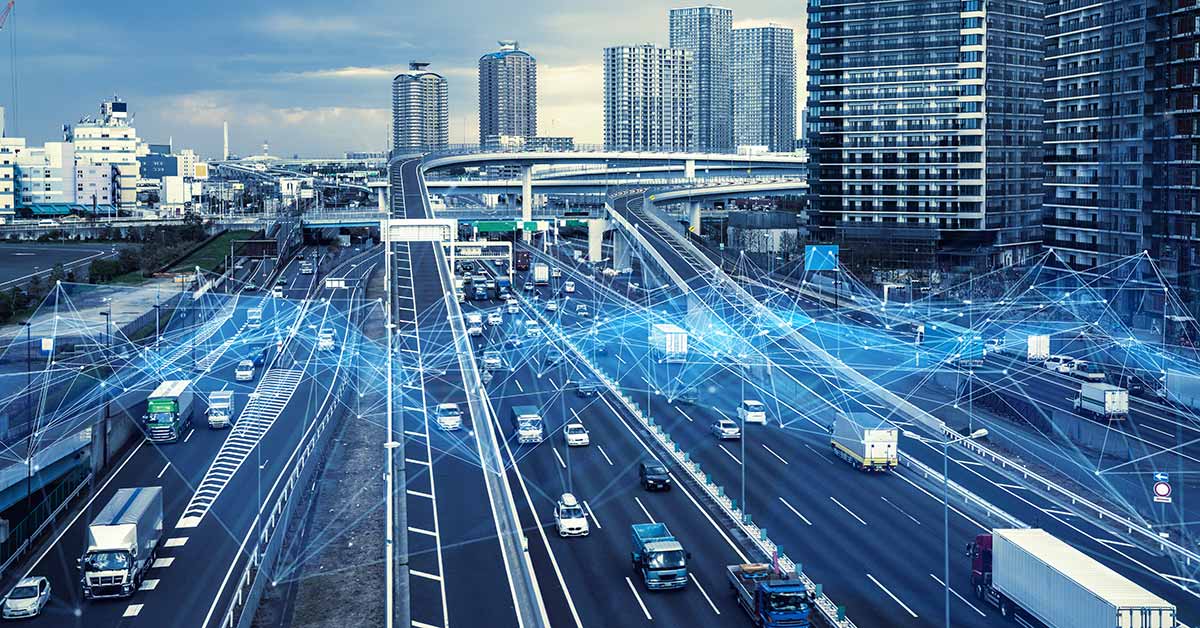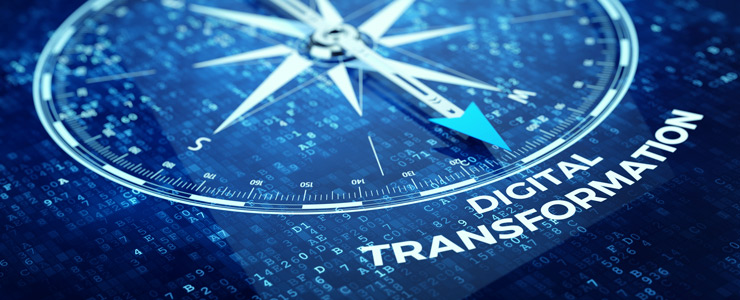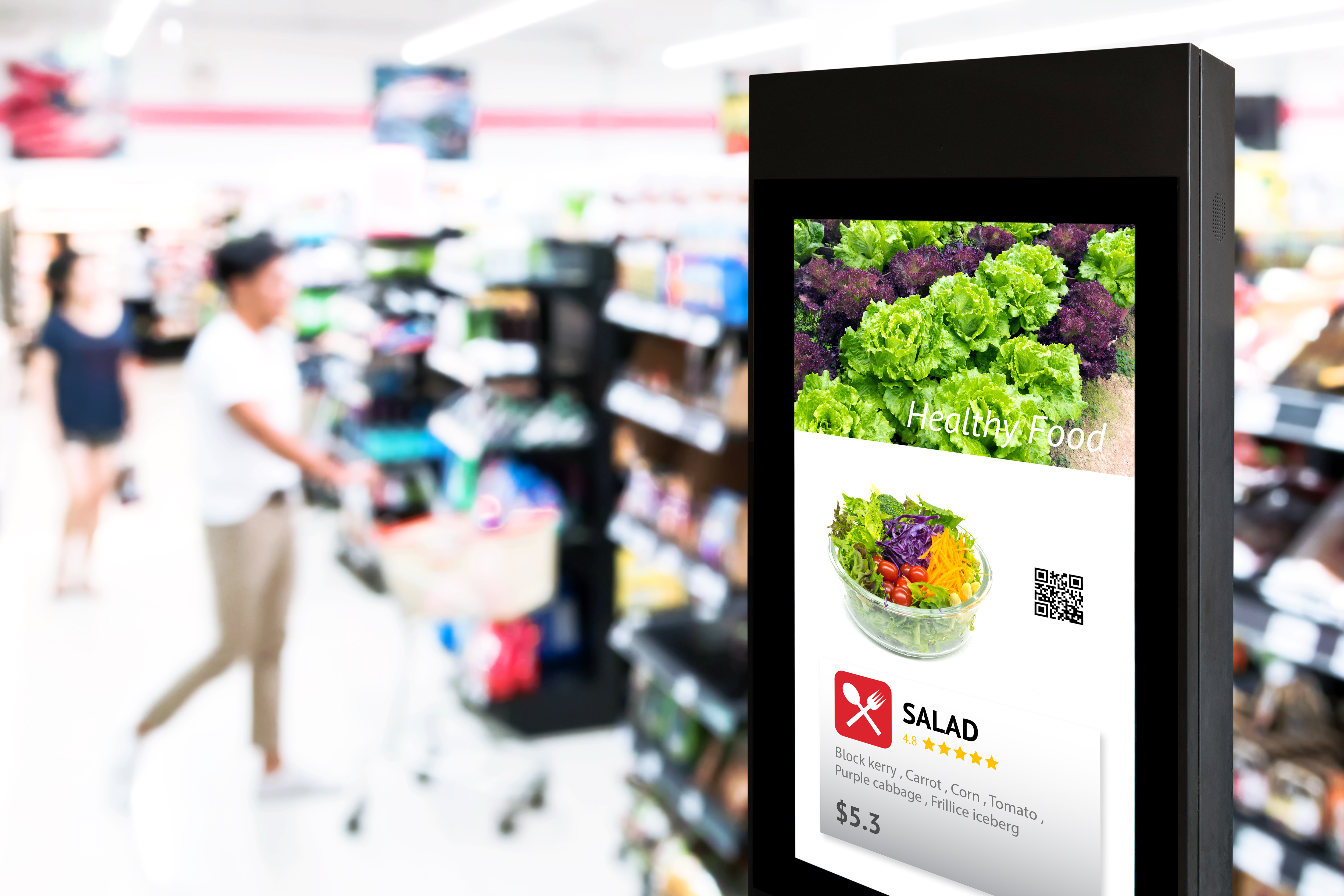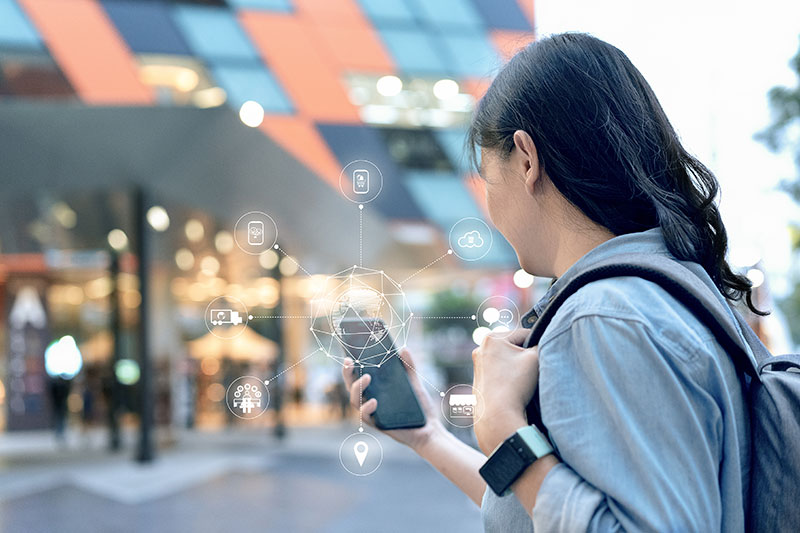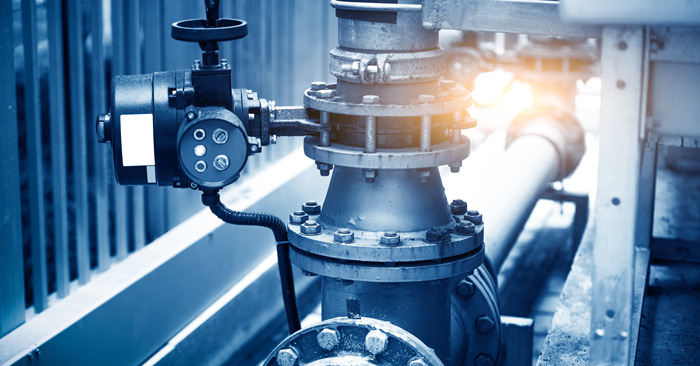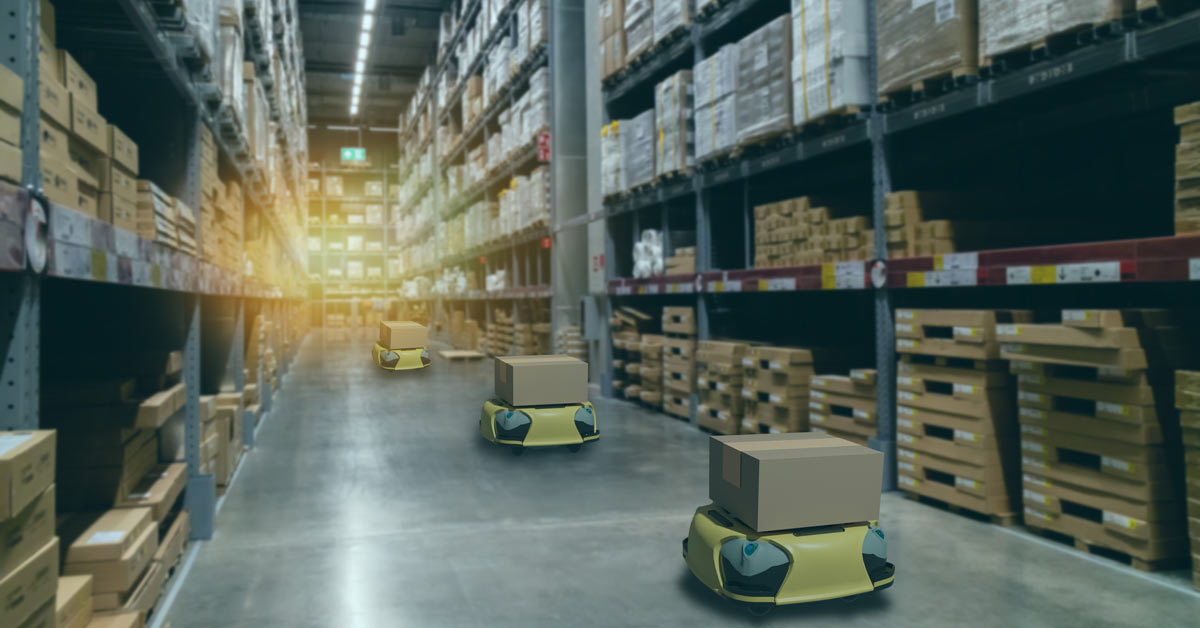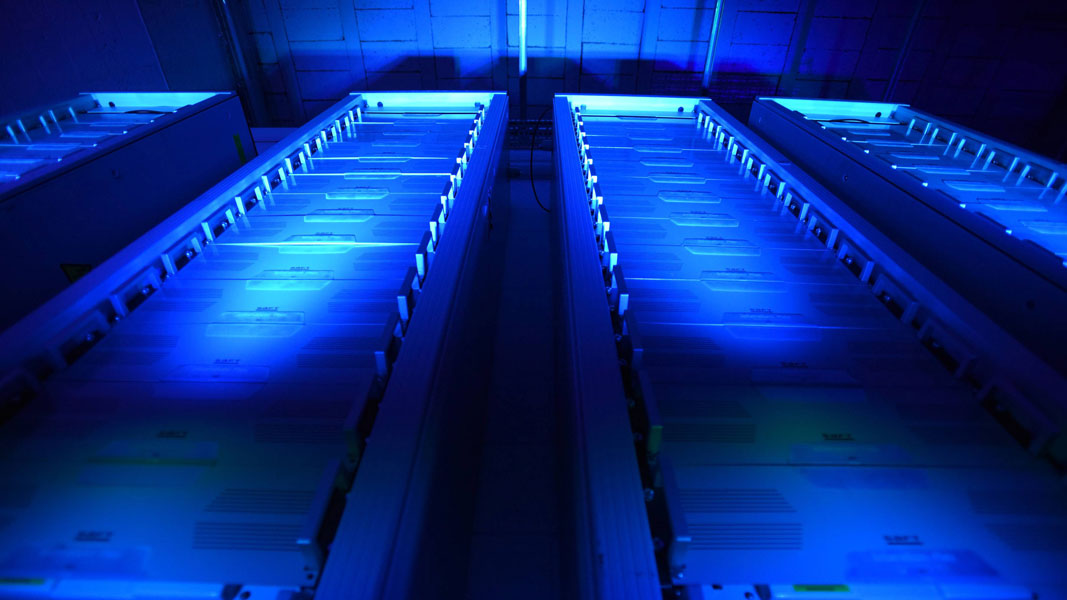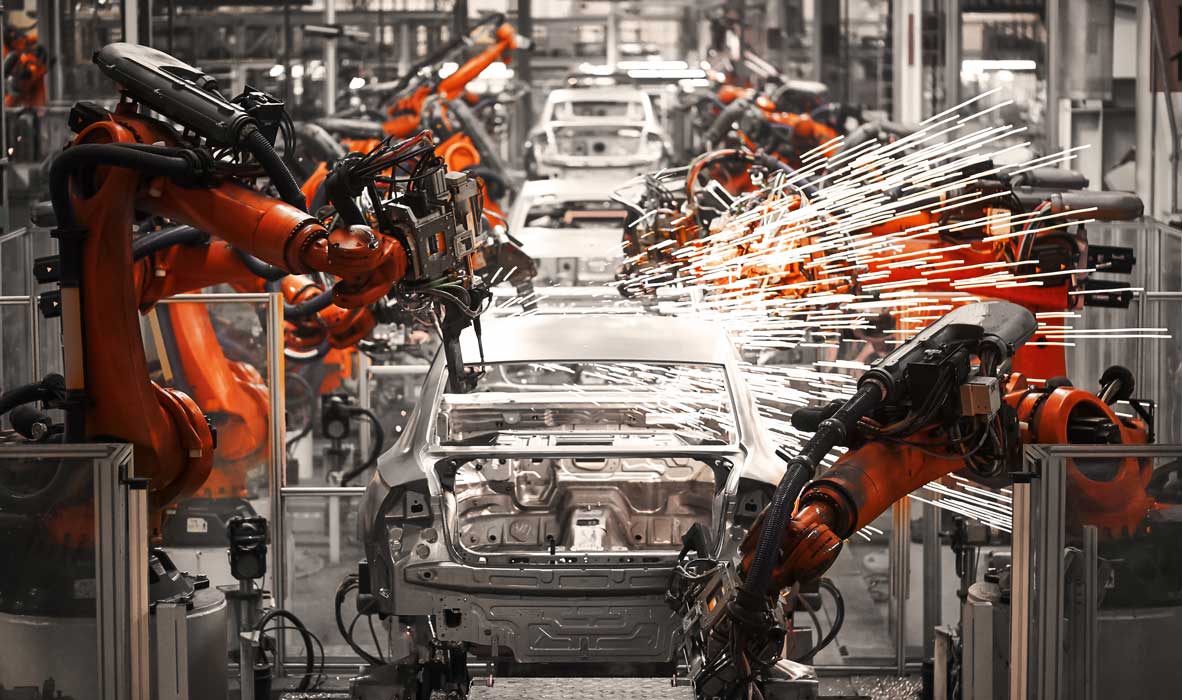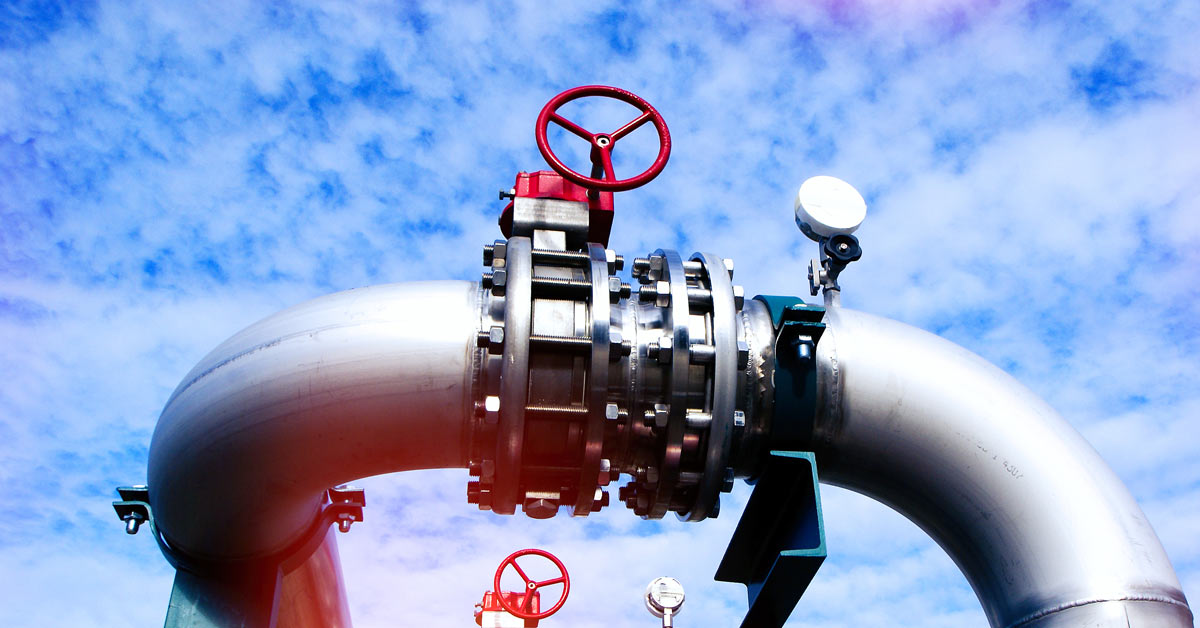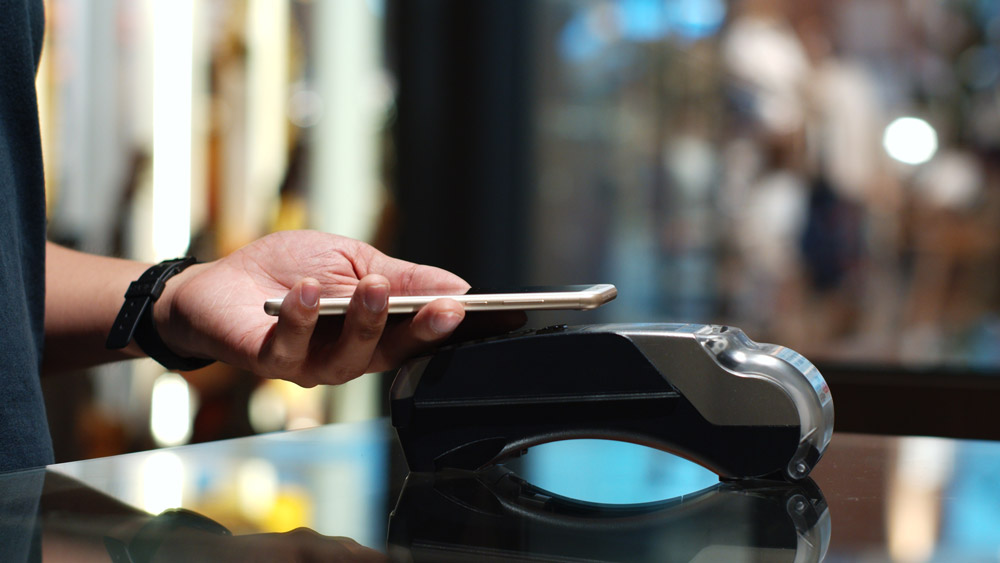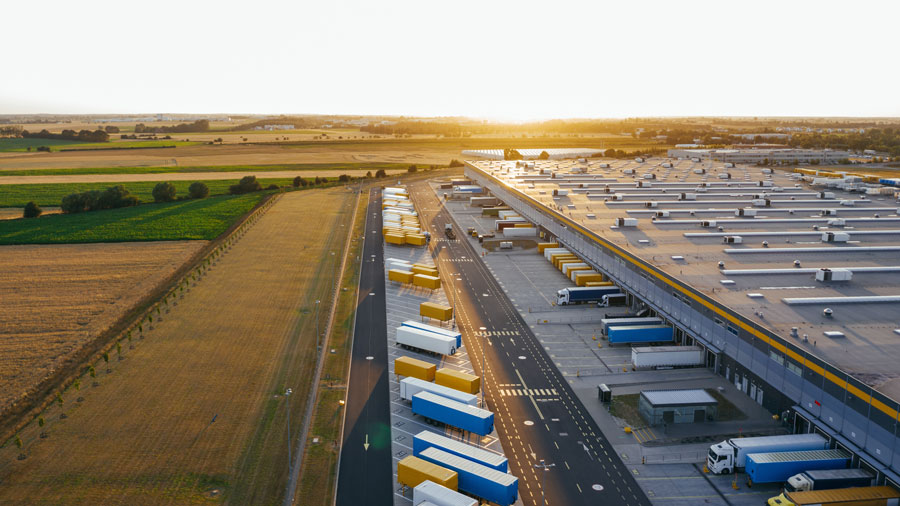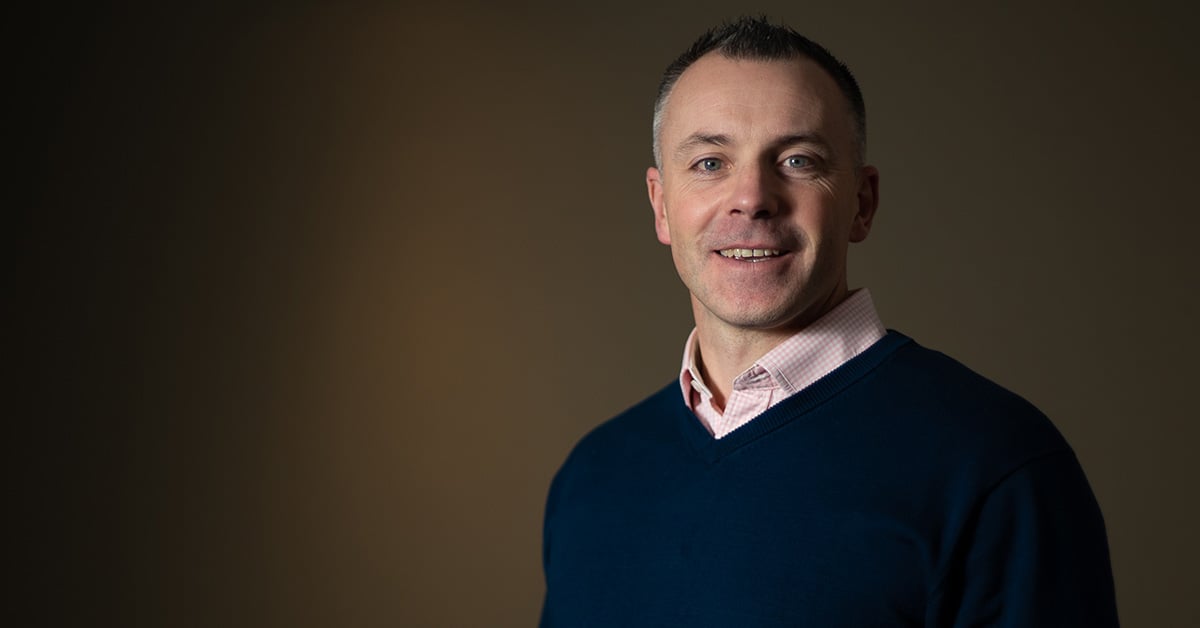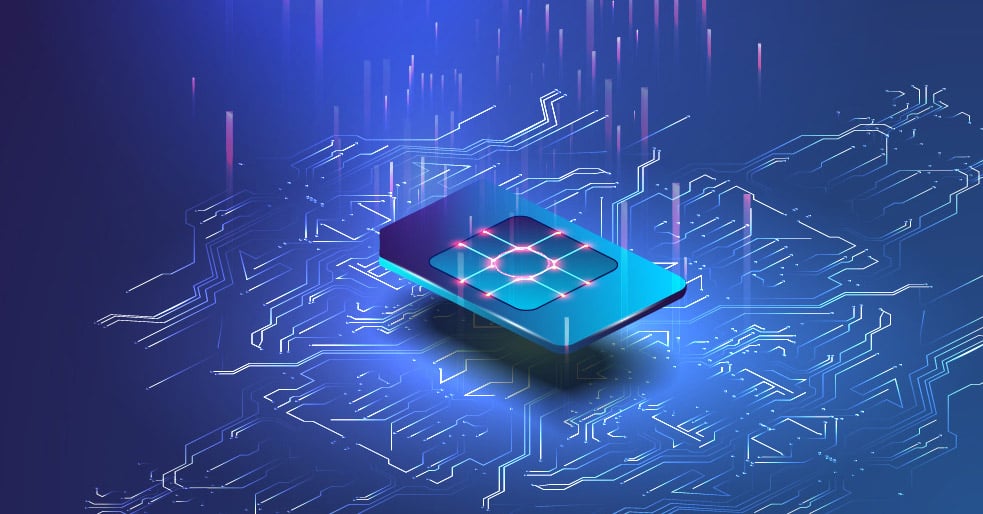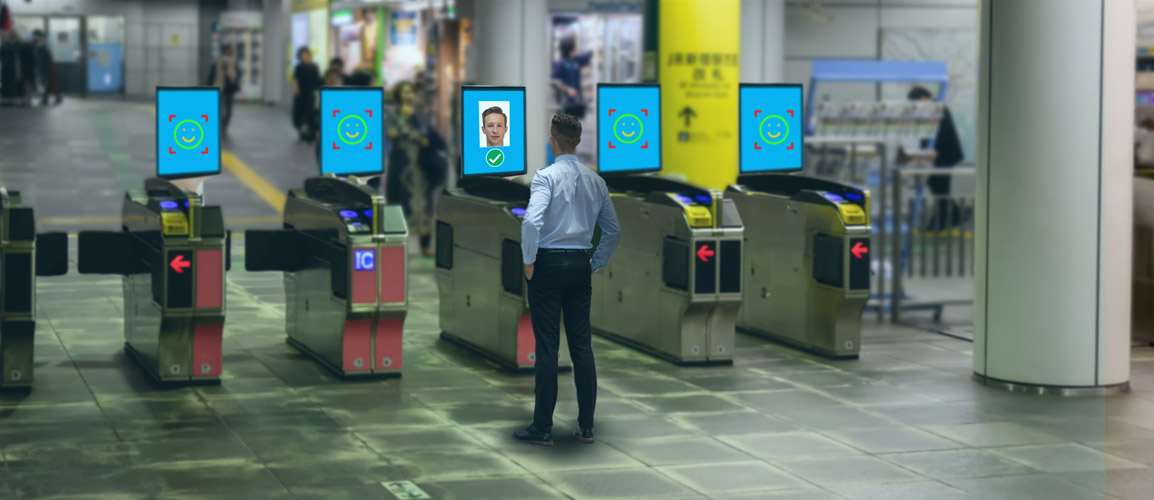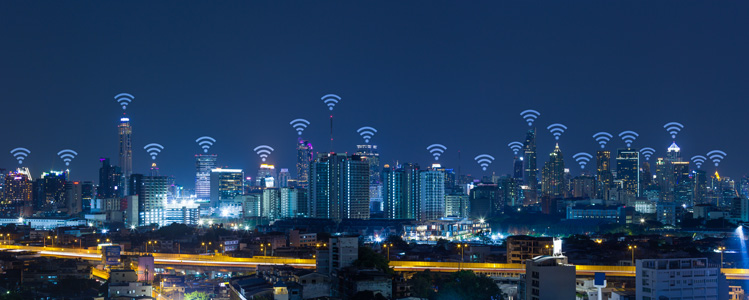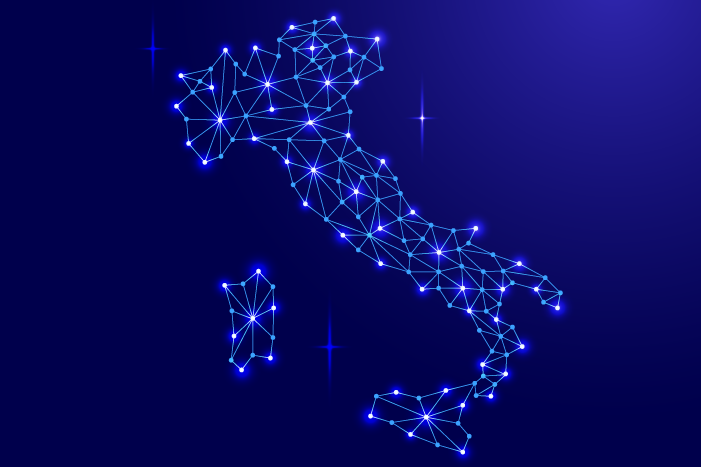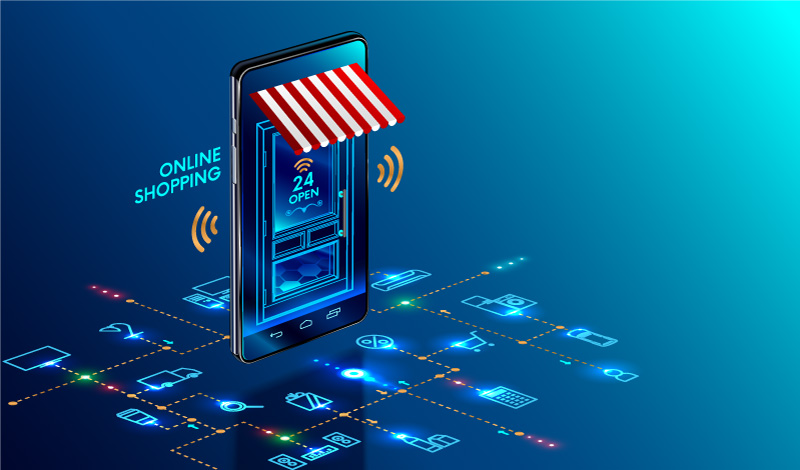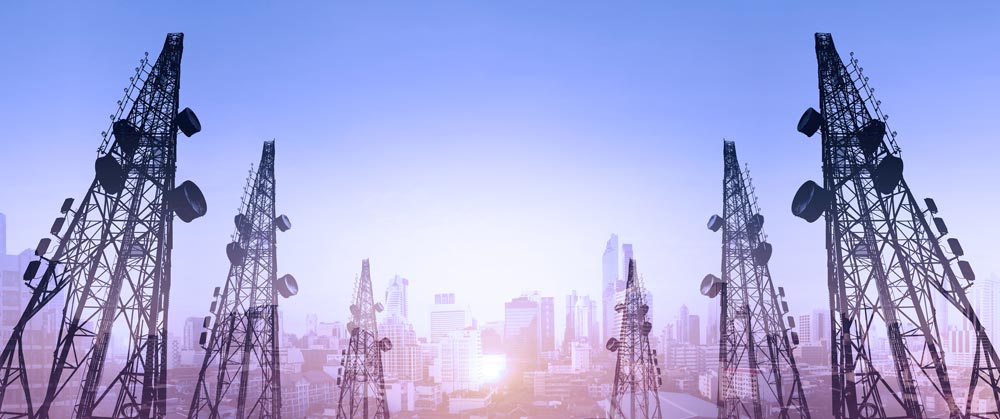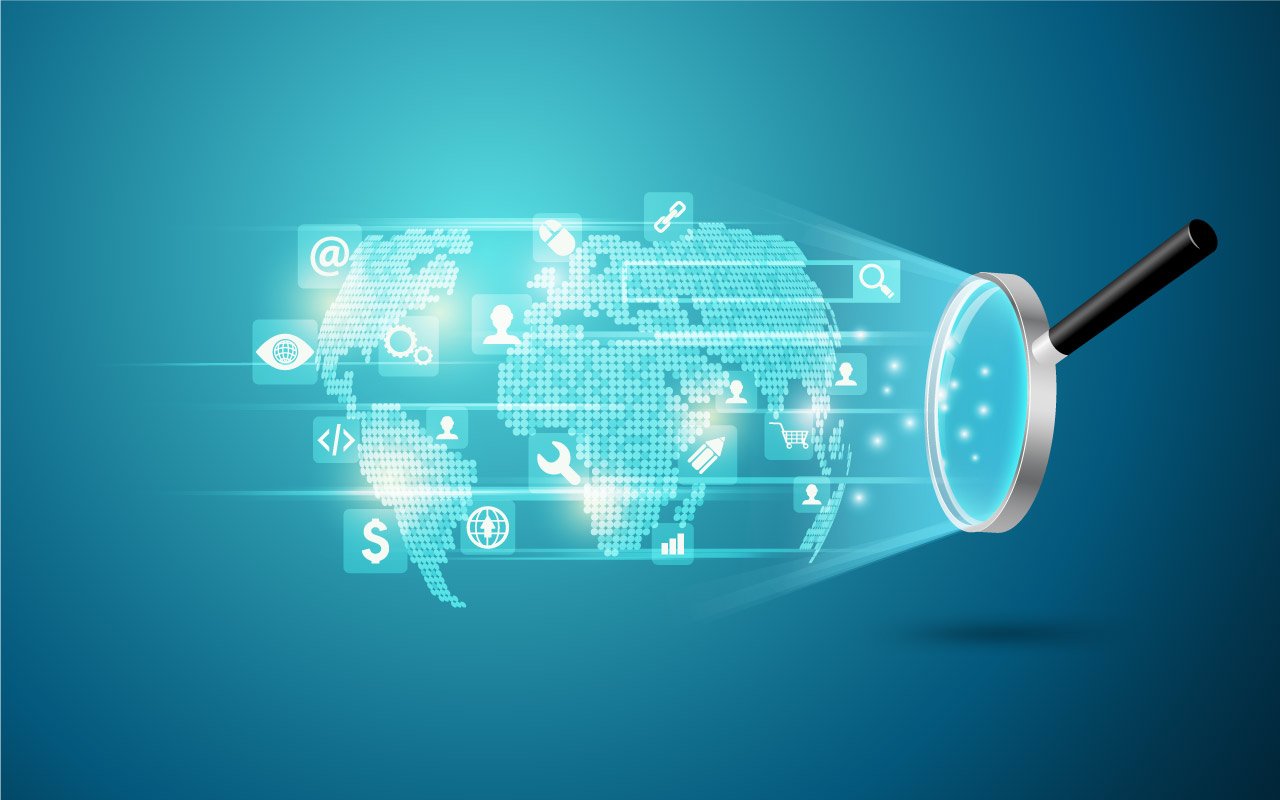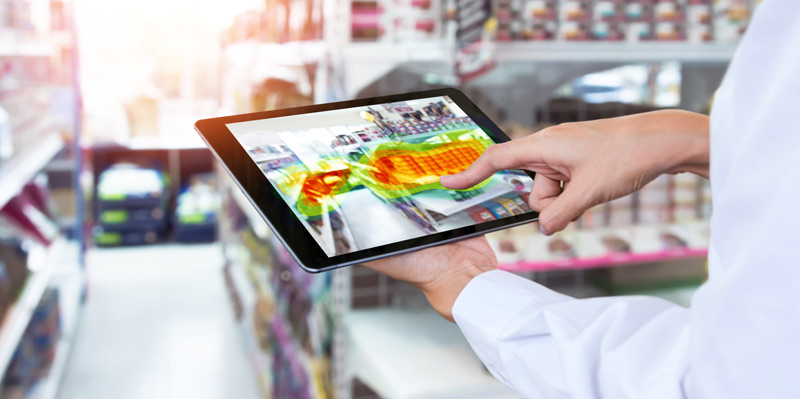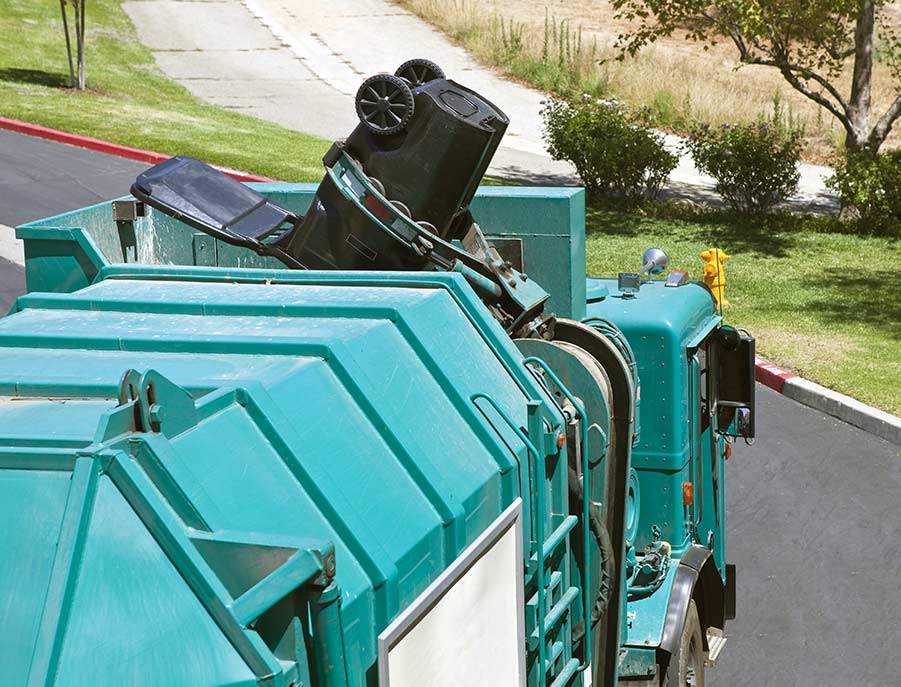Offerings enhance digital protection for consumers across the Austria market as online scams, malware, and fraud continue to increase
London, United Kingdom - 21 March 2025: Three UK is enhancing its commitment to customer security with the launch of Three Device Security, a powerful new solution designed to safeguard users against online threats. Powered by Bitdefender, a global leader in cybersecurity, the service provides an extra layer of protection to help keep consumers safe from fraud and cyber risks.
Our latest blog post series explores how 5G private networks are revolutionising industries—with increased performance, flexibility, reliability, and security enabling autonomous vehicles, digital twins, and the factory of the future.
In Part 2, we’re looking at how you can use digital twins to increase efficiency, productivity, and safety.
Digital transformation Private networks Automation 5G Connectivity
Our latest blog post series explores how 5G private networks are revolutionising industries—with increased performance, flexibility, reliability, and security enabling autonomous vehicles, digital twins, and the factory of the future.
In this final part, we’re looking at how you can build the factory of the future with a 5G private network.
Digital transformation Private networks Automation 5G Connectivity
Our latest blog post series explores how 5G private networks are revolutionising industries—with increased performance, flexibility, reliability, and security enabling autonomous vehicles, digital twins, and the factory of the future.
We’re kicking things off with a look at how autonomous vehicles are shaking up industries.
Autonomous vehicles are set to transform more than just roads
Autonomous and remotely driven vehicles are transforming labour-intensive industries such as agriculture, mining, construction, and manufacturing. And they’re making it safer for people working in these environments.
Digital transformation Private networks Automation 5G Connectivity
How 5G private networks enable the factory of the future
We’ve already explored how manufacturers can use the seamless connectivity of 5G to elevate efficiency and productivity, while adapting fast to the shifting demands of the post-COVID world.
But how else can private networks overcome traditional barriers to enable the factory of the future?
How manufacturers can use 5G to accelerate their path to Industry 4.0
Rising consumer confidence, increasing supply chain costs and the surge in demand for products and services, together with a renewed focus on sustainability, mean today’s manufacturers need new, innovative production methods if they want to hit the ground running in the post-COVID world.
The Internet of Things (IoT) has been quietly making waves in a number of key sectors for years but as digital transformation projects continue to gather pace the impact of IoT will be realised on an even wider scale. Gartner expects there will be 25 billion IoT devices by the end of 2021.
Request a callback
As retailers face a challenging future, smart building management could help the sector make significant cost savings. Managing everything from utility bills to energy consumption is an opportunity for retailers to monitor and control their buildings' electrical and mechanical equipment and gain valuable actionable insights.
Numerous systems feed into the management of a single building: lighting; electrical power; heating, ventilation and air conditioning (HVAC); access control, and more. Retailers often need to manage multiple locations including offices, stores and warehouses, increasing the challenge of effectively monitoring all of these systems. But not having control of these systems is costly: inefficient energy usage alone is costing UK businesses as much as £60 million per year in unnecessary costs, according to a Green Alliance 2020 study.
Request a callback
Building management systems have long provided a way for organisations to manage their energy usage, but new, smarter systems are opening up the doors to greater control and insight, and offering organisations the tools to confidently step into the changed workplace.
Request a callback
Private networks are fast becoming synonymous with enabling digital advancement, particularly in sectors with large campuses that have struggled to find a connectivity solution they can rely on. In our latest infographic we highlight some key ways in which organisations are making the most of their private networks.
Digital transformation in some sectors has been underway for over a decade, but there’s never been an accelerator like COVID-19. The immediate changes that were forced on people and businesses in 2020 have given proof to digital investment business cases that would have previously required extensive research and a reasonable acceptance of risk in order to implement.
IoT Digital transformation Enterprise solutions Artificial intelligence Private networks 5G
Data-led insight has a significant role to play in supporting the governments and businesses – from SMEs to Multinationals – to weather the COVID-19 storm and prepare for the coming challenges of post-lockdown planning. The opportunities and challenges of an increase in demand, combined with fundamental changes in customer behavior, will need to be carefully, yet quickly understood if we are to forge a new path as we emerge from the global pandemic.
In a mere 10 years, the UK is set to ban the sale of new petrol, diesel and hybrid cars. The alternative put forward by the government and ‘green’ campaigners: electric vehicles (EVs). In my role as Head of Product and Business Development at CKDelta, I see first-hand the role that anonymised data can play in supporting a smooth transition to a greener transportation sector.
At the helm of data science business, CKDelta, I see first-hand the possible roles that anonymised data can play in supporting governments and businesses to weather the COVID-19 storm. The application of anonymised data is increasingly yielding rich insights and foresight into real-world problems, brought to life by simulated solutions across a broad spectrum of sectors includingtransport, utilities and retail.
The rollout of ‘green’ automotive technology will not happen overnight. The promotion of electric vehicles (EVs) depends on the industry embracing the art of the prediction through quality data and machine learning.
This article is also available in Italian / Questo articolo è disponibile in Italiano.
The historical model of the enterprise, with in-house staff based around a corporate headquarters and a handful of branch offices, is a good fit for traditional enterprise technologies: including a wide-area network that lets offices collaborate as one and share central resources.
Private networks based on 5G technology have revolutionised operations at large campuses such as ports, manufacturing plants and airports. With faster speeds and throughput rates, lower latency and extended coverage, 5G private networks have replaced WiFi in many of these environments and ushered in a new era of connected and automated machines.
This article is also available in Italian / Questo articolo è disponibile in Italiano.
In my most recent blog I discussed how mobility data can give supermarkets and other retailers insights that can guide their decisions and marketing post-lockdown. But data-driven decisions are essential for organisations of all kinds, especially in the transportation sector, especially at this time.
Connected vehicles Data analytics Digital transformation Mobility Data
The 2020 Northumbrian Water Innovation Festival was, in many ways, the most interesting yet, as CKH IOD sponsored a design sprint that attempted to tackle a big question in just a few days, in a multi-stakeholder workshop that was completely virtual. This year we were tackling a key question: how can IoT be used to improve safety and efficiency for a water company’s field technicians, by providing more information about equipment, tools and assets in the field?
Unlike in previous years, this year’s festival sprint was totally online, led by CKH IOD, a team from Northumbrian Water and various experts from our partners at Invisible Systems, Fleet Space, LTI, United Vanning and Retroflo.
This article is also available in Italian / Questo articolo è disponibile in Italiano.
2020 - a year of the impossible: previously it was unthinkable that most employees would work exclusively from home. This begs the question: what other digital transformations may be possible in your enterprise?
The digital signage market is poised for substantial growth in the next five years with the retail sector leading the charge in adopting this technology. We chat with digital signage, marketing technology and retail experts Harry Horn of Scala and parent companySTRATACACHE, and Marco Salvetti of CKH IOD to find out how digital signage is changing the face of retail and what impact the technology will have.
Utilities, as we’ve mentioned previously in our posts about digital transformation, face the unique challenge of having a highly dispersed and often aging infrastructure that comprises a diversity of moving and stationary parts. But there are clear opportunities to get better visibility and control using IoT, especially for these moving parts, including heavy field equipment and vehicles.
This is an issue that we’re excited to be addressing at Northumbrian Water's Innovation Festival on 14-17 September, sponsoring a design sprint that tackles this question: how could IoT give field technicians better, faster information about the availability, usage and location of mobile assets like diggers, lorries and other equipment?
Furthermore, field technicians work in a highly dynamic environment that can include hazards. Can IoT be used to deliver timely warnings about known unsafe operating conditions, especially when technicians are conducting repairs on urgent outages that must be fixed quickly?
Driving out paper and driving up efficiency
The scale of the challenge with a utility like Northumbrian Water is significant. It serves 1.3 million properties in Northeast England and provides over 1 billion litres of water a day, across a vast infrastructure that includes almost 400 pumping stations.
Already the technology deployed to manage its operation is immense, including SCADA systems that deliver reliable information about the operational side of the water network.
But while these accurately alert on incidents and outages, we believe SCADA data could usefully be enriched and enhanced if the physical infrastructure -– right down to a physical asset –- were more visible, using IoT sensors that could detect vibration, movement, pressure, temperature or other changes of condition. The same sensors could potentially be deployed on all mobile assets and equipment, which is the subject of this year’s Innovation Festival sprint. By connecting these physical assets with IoT, the utility could then develop new digital work methods that eliminate paperwork, logbooks and other manual processes around use and location of equipment.
Cranes, diggers, lorries, trucks, and other tooling needed to maintain the water pipeline includes heavy equipment whose location could be pinpointed using IoT, and the performance and utilisation of assets could also be monitored.
That means better, richer data that not only helps optimise efficiency, but also helps the organisation understand and justify its investment in field equipment. The potential for improved worker safety is also clear, as connected equipment and connected workers would make it possible to send and receive safety alerts -- including distress calls and real-time alerts on hazards.
Design thinking and focussed innovation
We’re delighted that despite the challenges of 2020 this year's Innovation Festival is going forward as a fully virtual event, allowing us to bring together solution partners in a condensed, four-day version of the typical festival timeline.
CKH IOD will be assembling a team of partners to collaborate on what will now be a four-day sprint, with a presentation to management on Day 4. As in previous years, we’ll be taking a design thinking approach, examining the entire challenge of mobile asset tracking, and looking at what kinds of information would be most beneficial to business and to technical stakeholders.
This is focused innovation, assembling our skilled partners around how to create a solution that advances both the business and the technology objectives of the customer. Rather than a process lasting months, a working model is ready within days for presentation to management, who can then take on board what's been achieved and assess whether to move forward with a fuller project.
Facilitating rapid time-to-value for utilities and IoT
Last year CKH IOD, actually took First Prize for a hack-a-thon showing how a data integration solution can minimise water supply interruptions. This year, although the festival will be virtual, we look forward to again doing what we do best: facilitating collaboration with the right partners, and helping explore new ways to get better, faster, richer information that drives down cost and improves efficiency.
Business problems, particularly for utilities, are always holistic rather than isolated. The Innovation Festival provides an excellent opportunity to look at problems in the round, mindful of the wider context and investment of the organisation.
For more information and to see the full line-up of the 2020 Northumbrian Water Innovation Festival, visit https://www.innovationfestival.org/the-festival/line-up-for-2020/sprints/ckh-iod/
The Covid crisis of 2020 has obviously changed daily life, but it's also changing companies' ideas about technology, and how more automation and more connectivity can help them stay productive during lockdown and social distancing.
Never before have consumers turned to the online channel for shopping as much as they do today. With retailers suddenly needing to cater for much heavier volumes online, it raises new questions about how successful a retail organisation is at delivering omni-channel customer service which is centered on the customer's need.
The utilities sector has long been a pioneer when it comes to technology adoption, but recent developments in network connectivity and sensors have opened up a whole new world of opportunities. At the Integrated Transport Electricity Gas Research Laboratory (InTEGReL) we are exploring all of these opportunities, and within this environment my team at Invisible Systems is working with Northern Gas Networks on the development of a low-cost universal data capture device linked to sensors monitoring a variety of conditions across multiple gas, water and electricity networks.
Our sensors are a core part of the work at InTEGReL. Dotted around the 15-acre InTEGReL site, they are monitoring a range of conditions from network pressure to environmental data, including temperature, humidity and CO2 levels. These sensors transmit that data in real time to our centralised dashboard. From there the team keep track of the various metrics and can quickly identify and react to changes. Additionally, if pre-determined data thresholds are breached, real-time alerts are triggered and notifications are sent via text, email or in some cases, voice calls.
Private networks, and increasingly 5G private networks, are the powerful backbone behind digital transformation in some of the world's largest industrial companies. With low latency, high availability and broad coverage, 5G is fuelling the move towards automation. It’s also helping these companies to embrace the new industrial revolution and implement advanced technologies on their very own networks, throughout their extensive campus environments.
The rise of the Internet of Things (IoT) has created a magnitude of new connected devices and in turn, a magnitude of entry points waiting to be breached. An even bigger issue is that many IoT devices are easier to target than conventional devices, making them the new endpoint of choice for cybercriminals everywhere.
Companies know that the initial measures they implemented as a tactical response to the crisis of 2020 must now mature into something more sustainable. Many enterprises are now looking at how they can sustain working-from-home in the long-term and begin a phased reopening of offices and retail locations.
This article is also available in Italian / Questo articolo è disponibile in Italiano.
Businesses across the globe are pushing forward with digital transformation projects as organisations look to increase efficiencies, become more flexible and equip themselves to react quicker to change. From changing work practices and rolling out widescale remote working to introducing new products or services, companies are looking to SD WAN to drive these changes.
For most people, 30 years seems far away, but it feels like next week to those of us working to meet the UK government's 2050 target for Net-Zero carbon emissions. Both for myself at Northern Gas Networks and for my colleagues in other utilities, the Integrated Transport Electricity Gas Research Laboratory (InTEGReL) facility is an important aid as we look to accelerate the pathway to decarbonisation, not just for a single utility, but from a whole-system perspective.
In the ever-evolving business landscape the successful organisation is agile and has the know-how and capacity to adapt. Sectors ranging from Manufacturing, Ports, Airports to Energy are using technology to help them to react quicker to market conditions, competitive pressures and extraordinary global events. Richard Hart of CKHIOD highlights the way in which these verticals are embracing 5G private networks to drive through digital transformation.
Digital transformation doesn’t look the same in every organisation. For some, reimagining core elements of the business comes more easily, while in more traditional sectors, this level of change is profoundly uncomfortable.
For utility companies, digital transformation has a unique complexity and urgency. With dispersed infrastructures, including network elements that may be decades or even centuries old, it's challenging for utilities to achieve business objectives and meet regulatory requirements, which in the UK include a net-zero carbon emission deadline of 2050. And as regulated entities, utilities don't set their own prices, so driving efficiencies is the only way to realising a profitable business.
Digital transformation and the drive to deliver closer integration between online and off-line shopping was already a clear challenge for fast-moving consumer goods companies. But the unexpected crisis of 2020 has posed even greater difficulties, and companies are planning now how to adapt. It’s more important than ever to recognise how data, specifically mobility data, can guide business decisions.
For robust network connectivity, where there is often a seamless transition from a fixed line to a cellular network in the event of an outage, a high level of sophistication, visibility and control is required behind the scenes. Richard Taylor, IoT Business Development Manager with CKHIOD, explains how a cellular backup network with granular control is transforming the service resellers can provide to their customers.
Digital transformation initiatives are showing results across industries, and while strong leadership and a clear vision of objectives are vital for success, so is a flexible communications infrastructure. This is the case no matter which sector an enterprise is in. Digital transformation is also business transformation, potentially a complete change in how an organisation connects to locations, suppliers and partners -- and this brings its communications infrastructure centre-stage.
By 2025 there will be 42 billion connected IoT devices generating almost 80 zettabytes of data. But what benefits are enterprises gaining from these connected devices and all of that data? As we enter into a new decade, Tom Gardner, Head of IoT & MVNO at CKHIOD outlines how IoT is making an impact in the retail, transport and utilities sectors.
We wrote last year about the ongoing complexities of the digital transformation challenge, and it's still true that this kind of fundamental change is difficult.
Global IoT services can prove challenging for organisations to implement efficiently, cost-effectively and with certainty throughout the device lifetime. Fortunately, eSIM makes this go-anywhere, always-on connectivity feasible.
For multinational companies looking at rolling out IoT devices globally, the challenge often boils down to one key aspect: connectivity. How do they ensure each device works the same way in each territory? For IoT managed services firm Eseye, ubiquitous, out of the box, zero touch connectivity is the Holy Grail, the missing piece that will accelerate IoT worldwide. Ian Marsden, Chief Technical Officer and founder of Eseye explains how the company and its partners are working towards making global connectivity a reality and why that's so important to the growth of IoT.
This decade is all about performance, and enterprises will compete and win on their ability to deliver faster, with more efficiency and better communication right across the organisation.
Today's ports are facing mounting challenges. The rise of the megaship with its massively increased container capacity and sheer size has created bottlenecks in ports all over the world with vessels regularly experiencing longer waiting times. As megaships become more prevalent and global trade continues to ramp up, ports are turning to technology to streamline operations and speed up the unloading and loading process.
IoT Private networks Automation Remote control Port of the future
Imagine a completely automated supply chain where processes combine with technology solutions to deliver products without any human intervention. A consumer places an order, the order is transmitted to 3D printers that print the final product using additive manufacturing processes. The completed order is then retrieved by a robot and packaged ready to be placed onto a self-driving truck. The truck leaves the production plant and drones are dispatched through a rolltop roof to deliver the products while the truck is in motion.
Airline passenger figures have hit an all-time high, surpassing 4.5 billion people. An increase in low-cost airlines, the growth of the middle class and a boost in airport infrastructure spending have contributed to this phenomenal growth. But as the number of passengers continues to grow, airports are poised to become busier, queues longer and the customer experience more stressful. So how can technology transform the airport experience?
The Internet of Things (IoT) is comprised of a hugely diverse range of devices, from smart consumer gadgets to sophisticated solutions that operate in utility, industrial, manufacturing and defence systems. Given the massive breadth and scope of IoT infrastructures, organisations will need to raise their security game to a whole new level to reap the benefits of IoT without risk.
The real strength of any communications network lies in its ability to maintain essential business communications while at the same time facilitating technological advancement. And with enterprises today firmly focused on digital transformation, their core infrastructure has never been more important. In the sixth article in our Digital Transformation series of blog posts, we take a look at how CKH Innovation Opportunities Development is working with enterprises to harness the power of their communications network.
The pace of digital transformation continues to escalate as enterprises around the world invest in technologies to transform their business processes, products and work practices. Indeed, IDC expects digital transformation spending to reach $1.2 trillion in 2019, an increase of 18% on 2018 figures. In the fifth in our Digital Transformation Challenge series of blog posts, we look at how CKH Innovation Opportunities Development is enabling transformative projects at multinational companies around the world.
Digital transformation is literally transforming the way enterprises do businesses, but more than that, the shift to digital is causing a deep revolution at the heart of organisations around the world. The very foundations on which companies operate – the network – is being overhauled to enable this digital transformation. In the fourth in our Digital Transformation Challenge series of blog posts , we look at how CKH Innovation Opportunities Development is helping companies implement SD WAN as a critical step in their transformation projects.
This article is also available in Italian / Questo articolo è disponibile in Italiano.
At Wind Tre, we serve around 30 million customers across Italy with telecommunications solutions that span mobile, fixed and Internet services. And now we're about to broaden what we can do even further, following a major agreement with Telefónica.
This article is also available in Italian / Questo articolo è disponibile in Italiano.
Retail is in the middle of a seismic shift. Bricks and mortar stores are disappearing from the high street as consumers continue to transition to digital channels: by 2021, online shopping is expected to account for 17.5% of global retail sales. In the third blog of our Digital Transformation Challenge series, we look at how CKH Innovations Opportunities Development is helping savvy retailers embrace technology to create the seamless customer journey consumers are craving.
In a move that will accelerate the adoption of IoT nationwide, Three Austria has launched Narrowband IoT. Three Austria is initially making the technology available to selected companies before rolling out the network country wide in mid-July.
This article is also available in Italian / Questo articolo è disponibile in Italiano.
In March we announced our strategic partnership with Telefónica and the new opportunities and enhanced capabilities that would be generated for large enterprise and MNC customers across our respective geographic footprints as a result.
This article is also available in Italian / Questo articolo è disponibile in Italiano.
The transformational power of data has been well documented, however, less than 50% of organisations are using it to drive efficiencies. Data as an asset is still very much in the "early adoption" phase says Gartner. This means that companies making strategic use of their data have a competitive advantage. In the second in our Digital Transformation Challenge series of blog posts, we look at how CKH Innovation Opportunities Development is helping organisations grasp that advantage and harness the power of their data.
This article is also available in Italian / Questo articolo è disponibile in Italiano.
The past couple of years have been dominated by talk of digital transformation. From keynote speeches to boardroom meetings, it's been a recurring topic. But for all this talk, implementing digital transformation, particularly on an organisation-wide scale, has been a slow burner. In this Digital Transformation Challenge series of blog posts we'll take a closer look at how CKH Innovation Opportunities Development's joined-up approach is helping organisations overcome the digital transformation challenge.
Today’s consumers expect personalised services and products that suit their individual situations and needs. They are also starting to expect meaningful and contextual interactions through their preferred digital channels and devices. For retailers with brick and mortar stores, this means grabbing hold of the opportunities that will drive better engagement, create new sales points and build brand loyalty.
The rapid growth of the Internet of Things (IoT) has ushered in what we now know as the “fourth industrial revolution” and the “second digital revolution”. By the year 2020, it is estimated that the number of connected devices in use worldwide will reach 20 billion.
The world is becoming increasingly dependent on machines and data. Analogue equipment is gradually being replaced with sophisticated devices, able to generate constant streams of valuable data, control processes, monitor environments and make predictions.
In Part 1 of our data analytics and the connected car series, we talked about the role that data will play in driving transformation across the transportation industry and in particular, connected vehicles.
When scientists and filmmakers shared their visions of the future in the 1960s, they imagined unmanned flying cars and superhighways sprawling across the sky. While some level of success has been achieved with aerial vehicles, it is the connected world that looks set to win the transportation race to the future.
In both the developed and developing world, huge volumes of waste are created daily. When you throw away a coffee cup or dispose of your newspaper, you might not pay much thought to how and when that waste is collected. However, it must be collected and managed efficiently and this can be a challenge for municipalities and waste companies throughout the world.
Deep beneath a manhole cover, miles away from its nearest hub, a smart meter wakes up, sends packets of analytic data into the cloud and goes back to sleep again. While this may not sound groundbreaking, the technology that drives this process is a breakthrough that is dramatically reducing costs and complexity and increasing flexibility for utility companies the world over.


